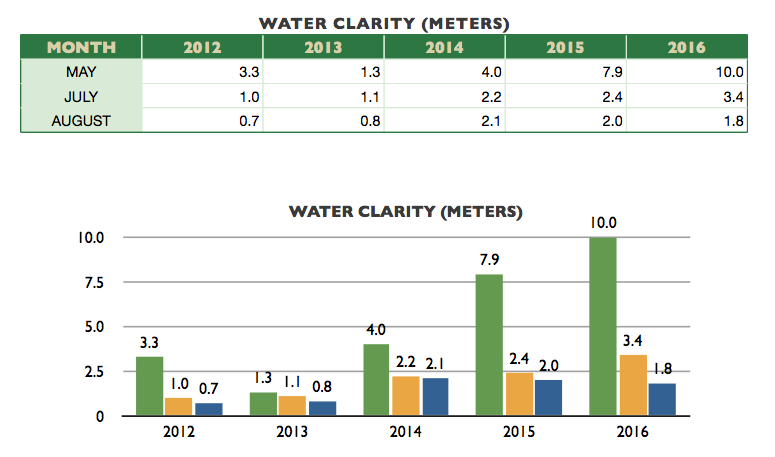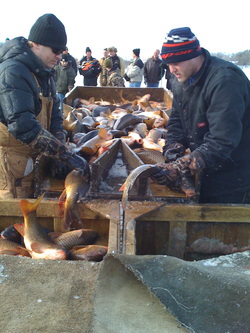Top 10 Things You Can Do
If you live near one of the watershed bodies of water and want to help do your part, take a look at the top 10 things you can do.
(provided by www.stateoftheriver.com) Alum Treatment RecapLast year, the Riley Purgatory Bluff Creek Watershed District (RPBCWD) approved funding of an alum (aluminum sulphate) treatment for Lake Riley. The treatment was applied the week of May 9th, 2016. This method for reducing the amount of phosphorous available as nutrient for weed growth was under consideration since the mid-2000s.
It was decided that before applying the alum, it was first necessary to control Riley’s explosive population of common carp, an invasive fish that, among other things, disturbs lake sediment and plant roots, which would negate the benefit of having the phosphorus confined in the sediment. This led to the extensive carp study done by the U of MN, led by Dr. Peter Sorenson. In 2015, with carp managed and kept at low numbers, the RPBCWD says: “...the district conducted herbicide treatments to control two invasive aquatic plants: curlyleaf pondweed and Eurasian watermilfoil. By knocking down these invasives, the goal was to promote a healthy and balanced native [weed] population. Establishing a thriving native plant population was particularly important because Eurasian watermilfoil can reproduce rapidly in clear water, and having healthy native plants prior to alum treatment will help keep the invasives from spreading.” These herbicide treatments took place in spring of 2015 and 2016. About Alum from the RPBCWD website: Alum (aluminum sulfate) is a compound derived from aluminum, the earth’s most abundant metal. Alum has been used in water purification and wastewater treatment for centuries and in lake restoration for decades. Alum reduces the growth of algae by trapping the nutrient phosphorus—algae’s food source— in sediments. Like most other plants, algae require phosphorus to grow and reproduce. Algal growth is directly dependent on the amount of phosphorus available in the water. Without available phosphorus, algae cannot continue to grow and reproduce. Alum is injected into water several feet below the surface. On contact with water, alum becomes aluminum hydroxide (the principal ingredient in common antacids such as Maalox). This fluffy substance called floc, settles to the bottom of the lake. On the way down, it interacts with phosphorus to form an aluminum phosphate compound that is insoluble in water. The result? Phosphorus in the water is trapped as aluminum phosphate and can no longer be used as food by algae. An added bonus: As the floc settles downward through the water, it also collects other suspended particles in the water, carrying them down to the bottom and leaving the lake noticeably clearer.” The result for Lake Riley 2016 water clarity is below, with four previous years’ data for comparison. Lake Vegetation Treatments-
|
Cost-Share ProjectsEarth Day Mini-Grants for teachers, educators, and students - Deadline March 15
Do you have an idea for an Earth Day or Earth Month activity? The watershed district is offering mini grants to help cover the cost of the materials and support your ideas. Grant awards range from $50 to $250 and are available to teachers, informal educators, and students (advising teacher required) who live or work within the watershed district. Deadline is March 15. Learn More Watercraft Inspector positions availableThe City of Eden Prairie is looking to fill their watercraft inspector positions (for aquatic invasive species) for the summer. If you know any high school grads, teachers, retirees or anyone looking for a summer job, please point them to the link below. Learn More
University of Minnesota Carp Study
|
Links |
Support© COPYRIGHT 2022. ALL RIGHTS RESERVED. |


